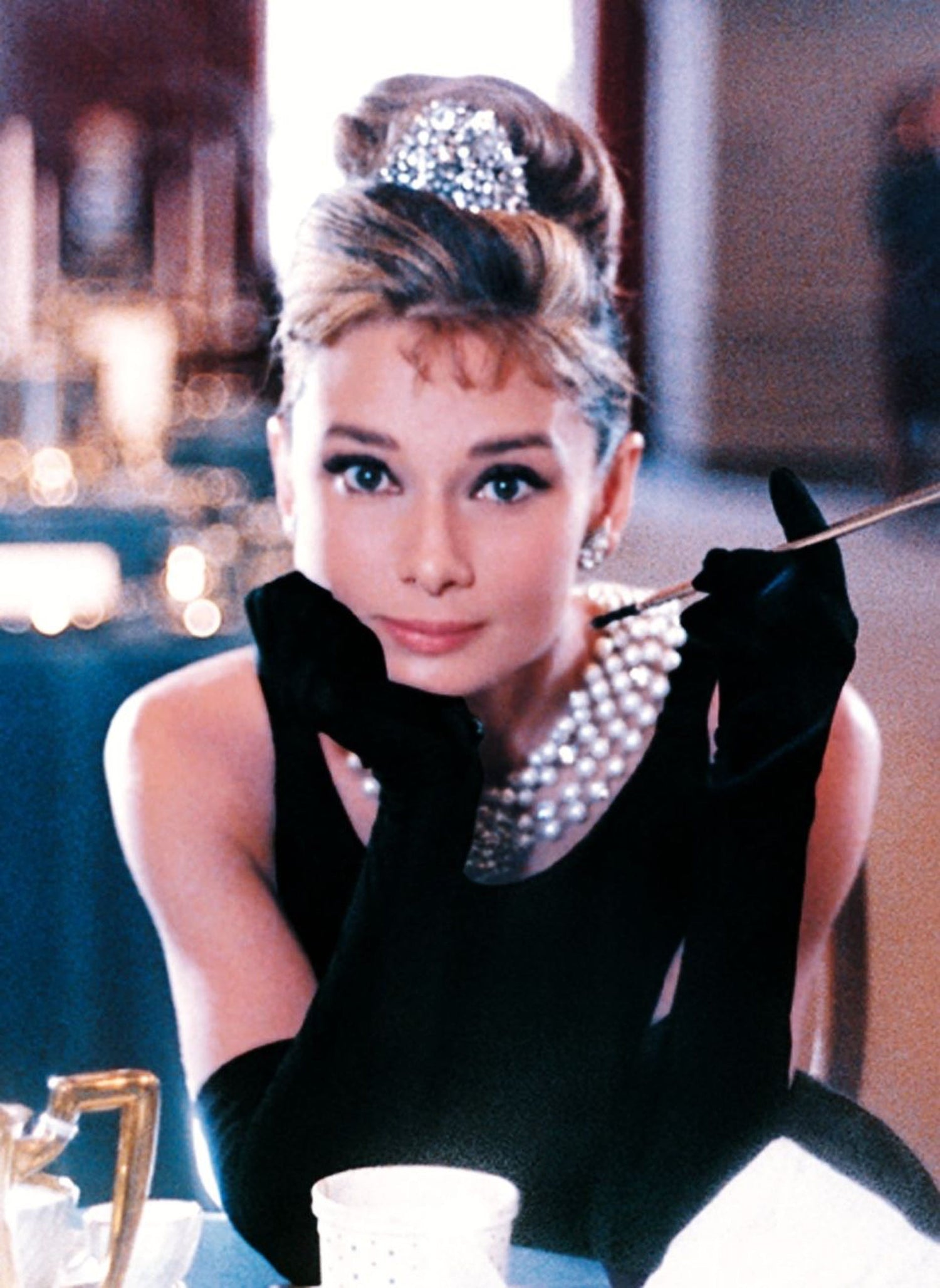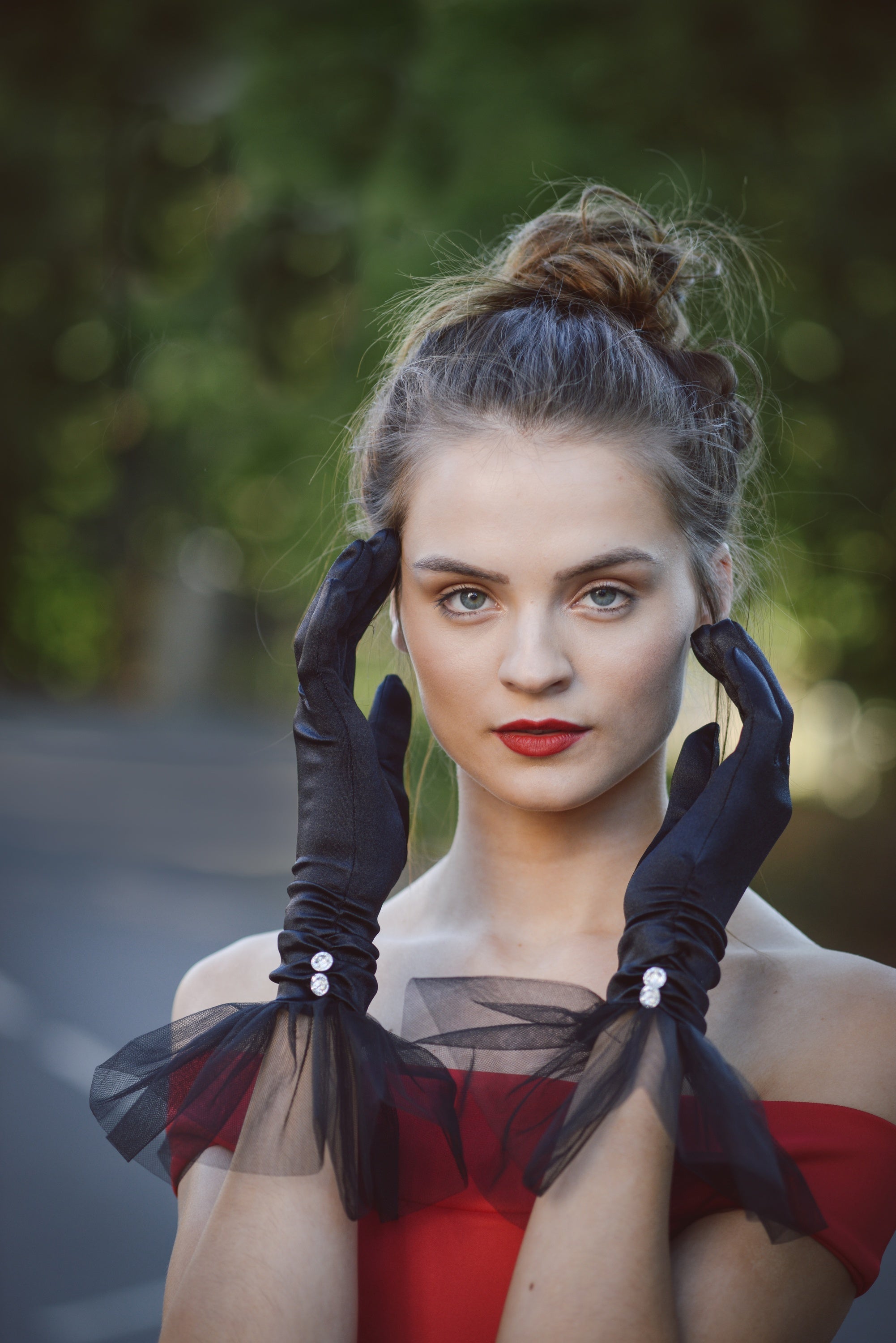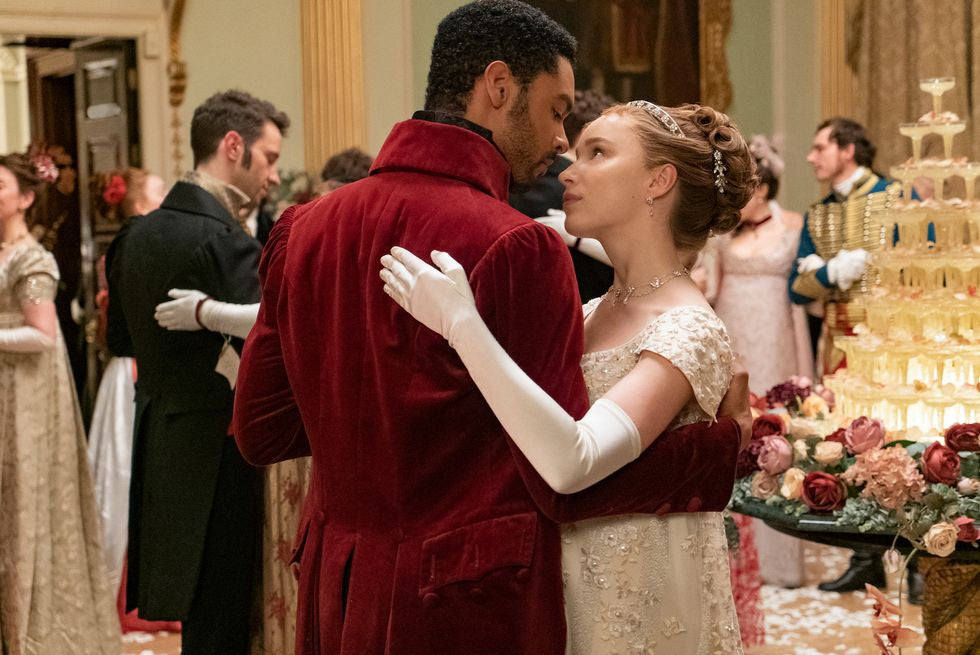At Cornelia James, we know evening gloves. In fact, we love evening gloves. Long ones, satin ones, lace ones, everything in-between ones. But where does our love actually come from? Call it an existential crisis, but we felt it was high time that we delved into the sartorial history book to discover the past of our dearly begloved. Starting as early as the 17th and 18th centuries (and all the way to the present day, via the Regency and Napoleonic period, Victorian and Edwardian era, and post-war Britain), evening gloves have remained an ever-evolving symbol of wealth and social status – but more on that later. So, first on the agenda: what exactly is an evening glove? In the traditional sense of the word, formal and semi-formal evening gloves are distinguishable by length, extending beyond the elbow and sometimes even reaching the shoulder (note: gloves extending beyond the elbow are also called 'opera gloves'). However, this changes during our timeline and can now be defined as a style that covers the mid-forearm and anything beyond. They are typically made from premium fabrics and historically, the most expensive materials were reserved for the wealthiest. From custom-made kidskin and suede iterations to the affordable alternatives (such as satin and stretch satin materials), the material chosen was reflective of rank. So, now that we’re all equipped with the crucial information, please change into your (metaphorical) time travelling ones and let’s delve into the long gloves fashion timeline.
17th – 18th Century
So, take a look around you. Welcome to the 17th and 18th century. We’ve officially started our journey to answering the question: ‘exactly why did women wear gloves?’ Well, the short answer is: ‘it happened over time.’ During the Tudor era, gloves were typically worn for practical purposes (such as weather protection or sporting), and the fashionable styles were wrist-length with extended fingers. So, how on earth did opera gloves take over? Well, it all started with the Stuarts and the Georgians, as during the 17th and 18th century, gloves became much more than just an accessory. This was most likely due to their debut on one very important, glove-wearing historical figure. So here’s another important question: ‘why does the Queen wear gloves?’ Well, in 1690, the reigning Queen Mary II is believed to have kick-started the very early association between the accessory and high social standing, as she appeared in an engraved portrait sporting elbow-length gloves. To this day, historians theorise this caused a domino effect and is the reason why gloves eventually became royal protocol – but let’s not jump ahead. During this time period, gloves were often gifted by the elite as wedding favours, to mourners at funerals and to monarchs as gifts. Allegedly, Queen Mary would even order two dozen pairs each month, so she could wear new gloves nearly every day. And whilst this was only the very start of the obsession, it began to boom as a new era dawned.
Regency and Napoleonic period
We’ve arrived at our next stop on our historical opera gloves tour: the Regency and Napoleonic period. By the time of Napoleon, the English Regency and the reign of George IV (time span of around 1795 and 1825), gloves had become a solid staple in women’s fashion in the Western world. It might help to visualise the era of Jane Austen, as ladies would wear opera gloves with short sleeved Empire dresses and ancient Greek-inspired gowns, emulating statues from ancient Greece and Rome. At this point in our timeline, royalty would always wear gloves. Napoleon himself was a big fan of the style, as he reportedly owned 240 pairs and frequently encouraged the ladies of his court to also appear in the style, with the Empress Joséphine often wearing opera gloves too. In fact, at Napoleon and Joséphine’s coronation in 1804, the pair appeared in gloves that cost thirty-three francs per pair – which, in today’s currency, would be quite the sum. This made them the absolute height of fashion, although they looked a little different to the styles before. Now made from kidskin and cloth, Regency and Napoleonic glove-wearers preferred their styles to fit the arm, often styled in a stacked fashion below the elbow or stretched to maximum length and secured with garters.
19th – 20th Century
We’ve made it to the Victorian and Edwardian era – otherwise known as the heyday of the opera glove. During this period, it was standard procedure to sport opera gloves during, well, all times of the day. Victorians developed an obsession with social status, and this was something that could be communicated to one another via clothes and accessories – particularly gloves. In fact, it was actually expected of the middle and upper classes. Of the long list of Victorian etiquette expectations, one rule advised: ‘never go out without gloves.’ This meant it would be very uncommon to spot a well-dressed woman without a pair. Wealthy women would wear expensive styles to indicate they didn’t need to use their hands for laborious work, as they were looked after by multiple servants. The working class would get involved too – albeit with cheaper versions – but this was mainly so they could hide their roughened work hands. The style had also evolved to keep up with its daily demand. By the Edwardian period, the most popular option was the mousquetaire, which boasted buttons to the wrist and allowed its wearer to slip her hand out without having to take the entire garment off. During the day, women wore practical leather or suede gloves that extended past their forearms. By the evening, this was swapped for silk styles. Gloves were also expected to be properly tailored, as ill-fitting ones indicated that you belonged in a lower class.
Post-World War I and II
Unfortunately, the start of World War I (1914 to 1918) and eventually the Second World War (1939 to 1945) meant that the lavish nature of daily opera glove-wearing came to an end. Times were tough and luxuries were rationed – causing the previous boom of the opera glove to wane. It was during this period that women became more active in the workplace and would therefore need to use their hands for manual work and the war effort. This meant that opera gloves were put away for the duration of this time, as the materials suitable for labour (such as leather and suede) were no longer readily available. And, well, satin just wouldn’t do. However, whilst the era saw a definite decline in daily opera glove use, it wasn’t a complete extinction. Instead, it was a slow but steady evolution of the style. As the Roaring Twenties sparkled into life, Flappers began reaching for opera gloves to accessorise their outfits. It was an exciting revival, as the Art Deco period directly impacted the design – now, they were embroidered with geometric patterns and intricate beading, and often made from a sheer lace or light cotton. At the time, Elsa Schiaparelli introduced her Surrealist styles with 20-button opera gloves and wrist-length styles finished with red painted fingernails. By the ‘60s, the Gauntlet style was in full swing – a far more practical design that featured a large cuff that folded over at the wrist and could be easily removed.
Modern Day
And here we are, back where we started. So, what can we tell you about opera gloves in today’s society? Well, their ladylike styling is now synonymous with classic Hollywood cinema, calling to mind best-known images such as Marilyn Monroe in Gentlemen Prefer Blondes, Audrey Hepburn in Breakfast at Tiffany's and Rita Hayworth in Gilda. Across the world, they’re also relied on as a practical accessory, with Japanese women sometimes choosing to wear long gloves in the summer to protect their skin. They've also enjoyed some niche revivals in the luxury fashion world, such as a series of haute couture collections during the late noughties. Oh, and it’s currently predicted that we’re about to experience yet another resurgence of the style – with fashion favourites Beyoncé, Adele and Zoe Kravitz all recently wearing contemporary versions. And whilst we can’t fast forward to the future, one thing’s for sure: opera gloves are here to stay. So, now all that’s left to do is head to the tour gift shop (also known as our own collection of handmade opera gloves) and pick up your very own pair. Right this way…









